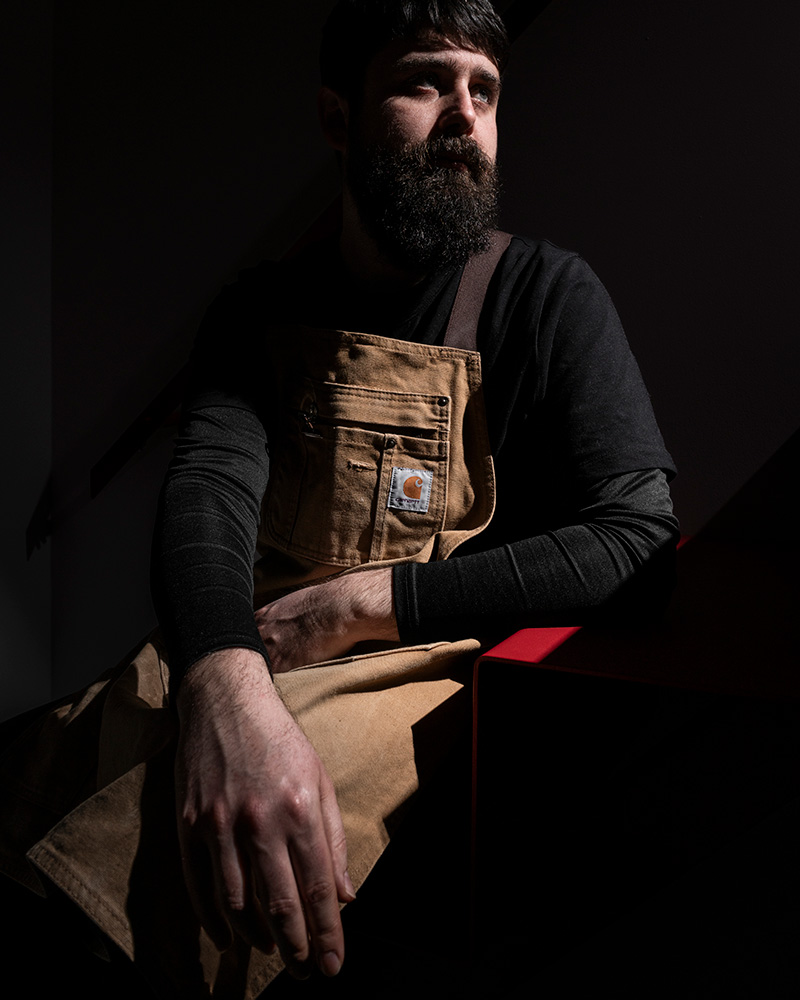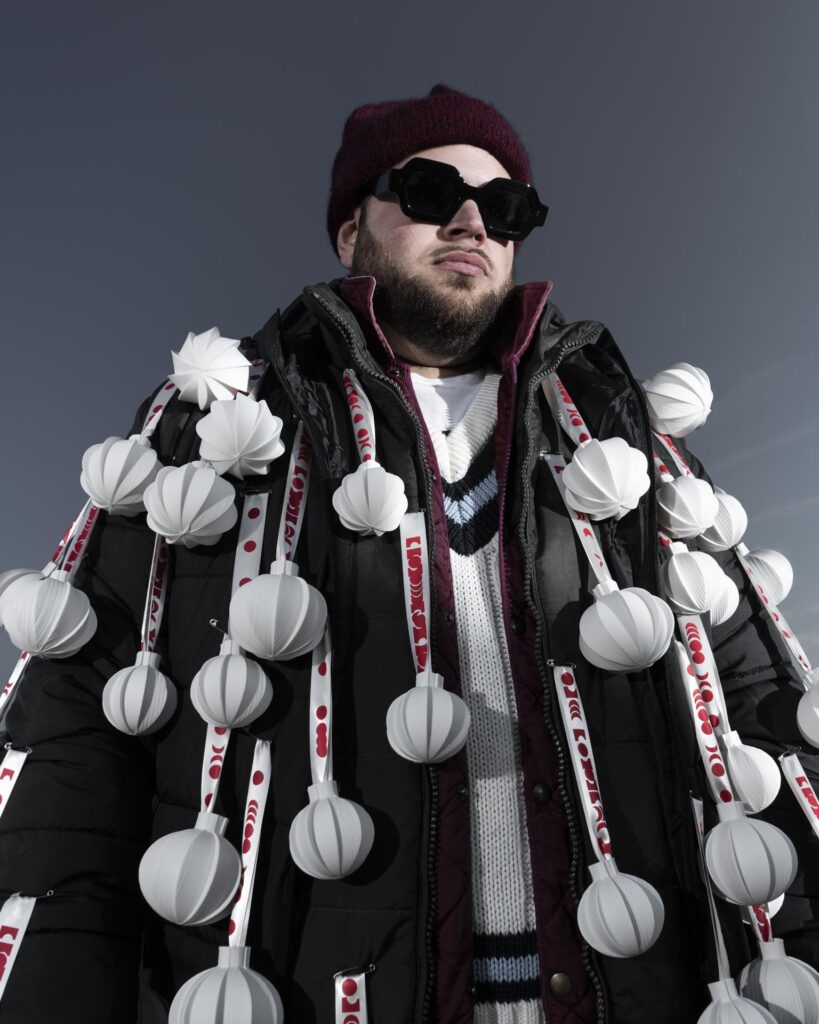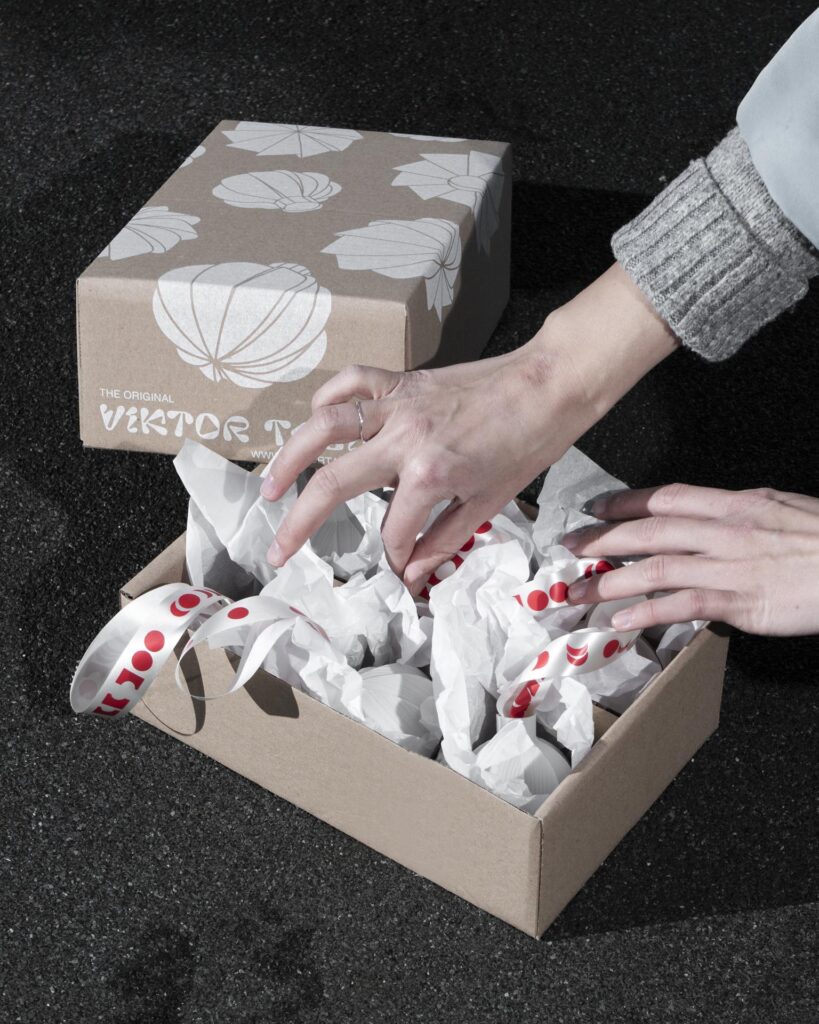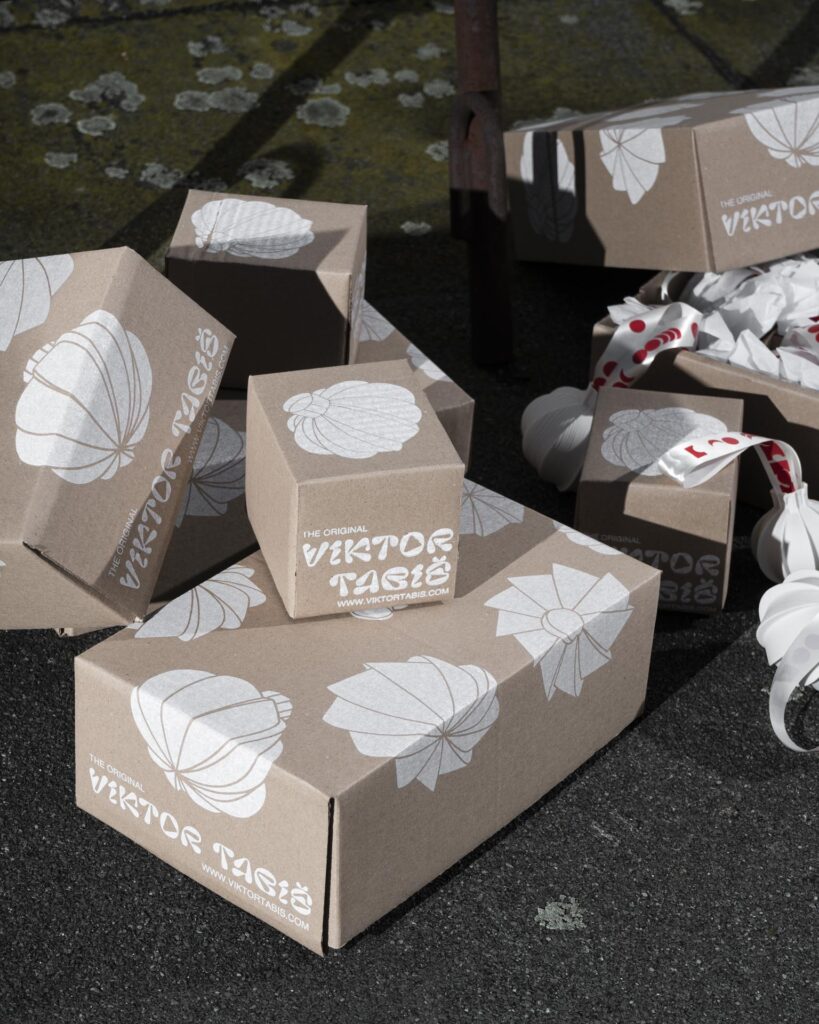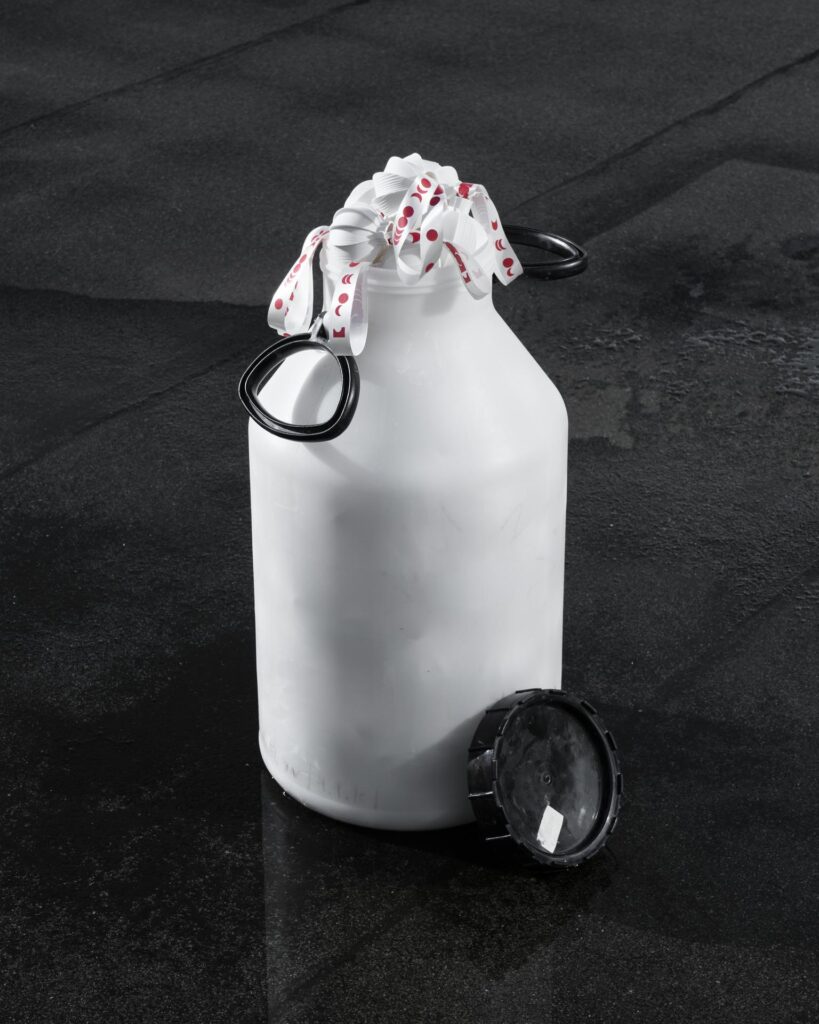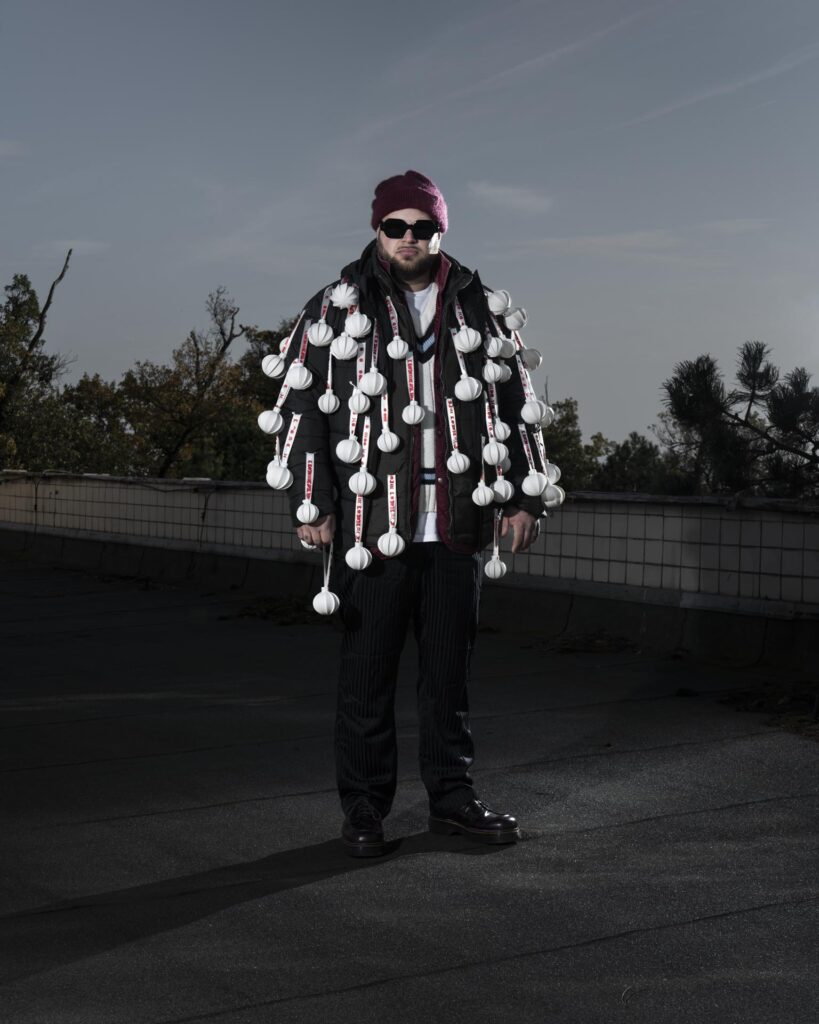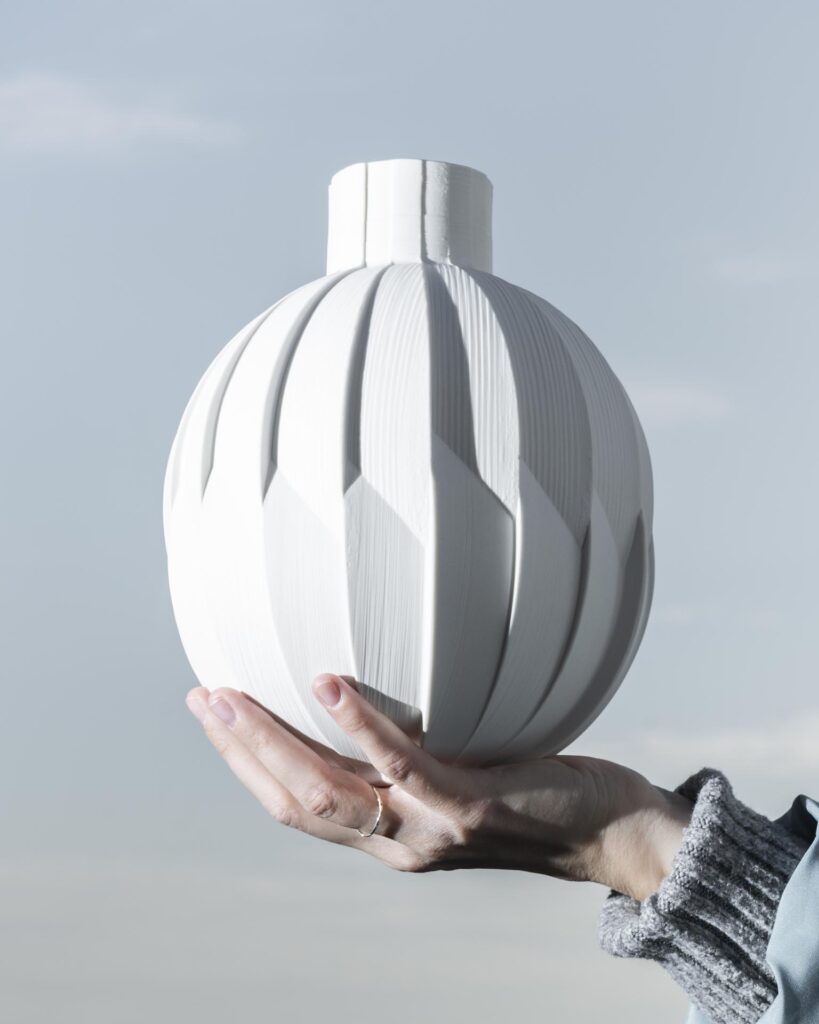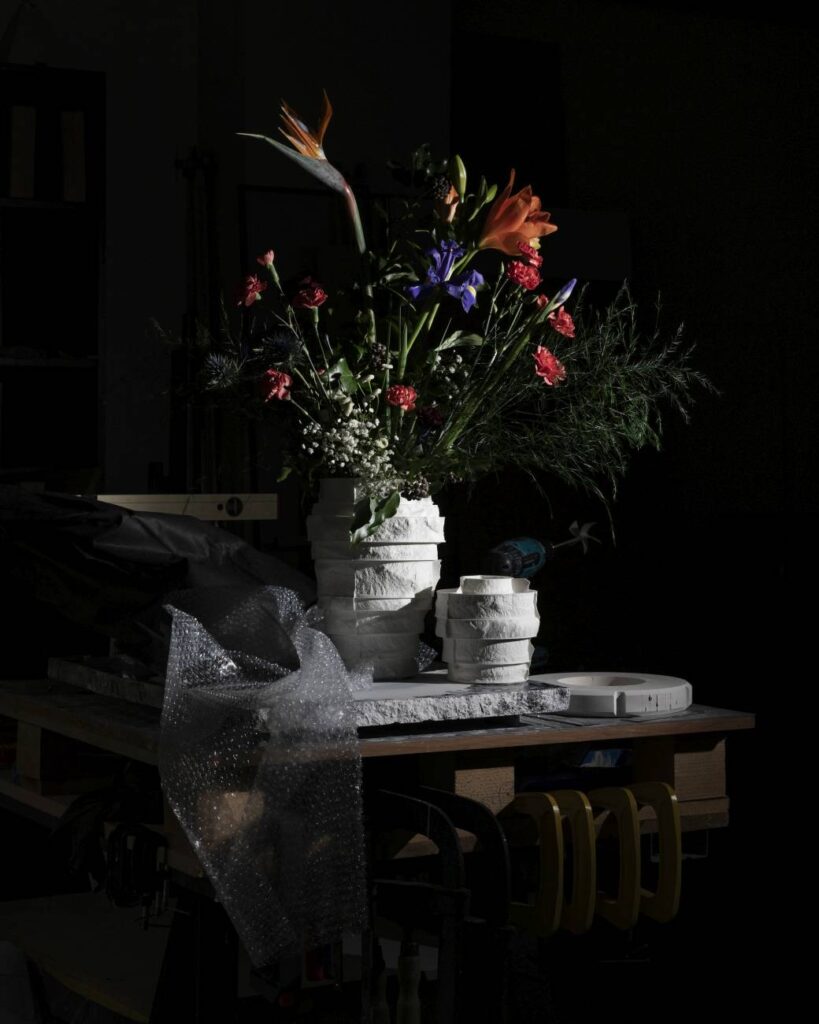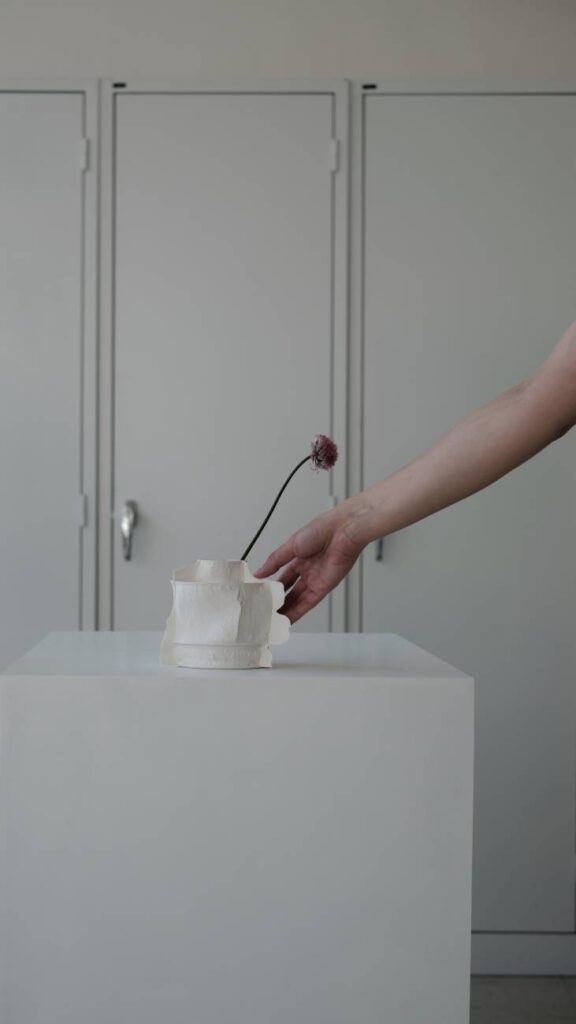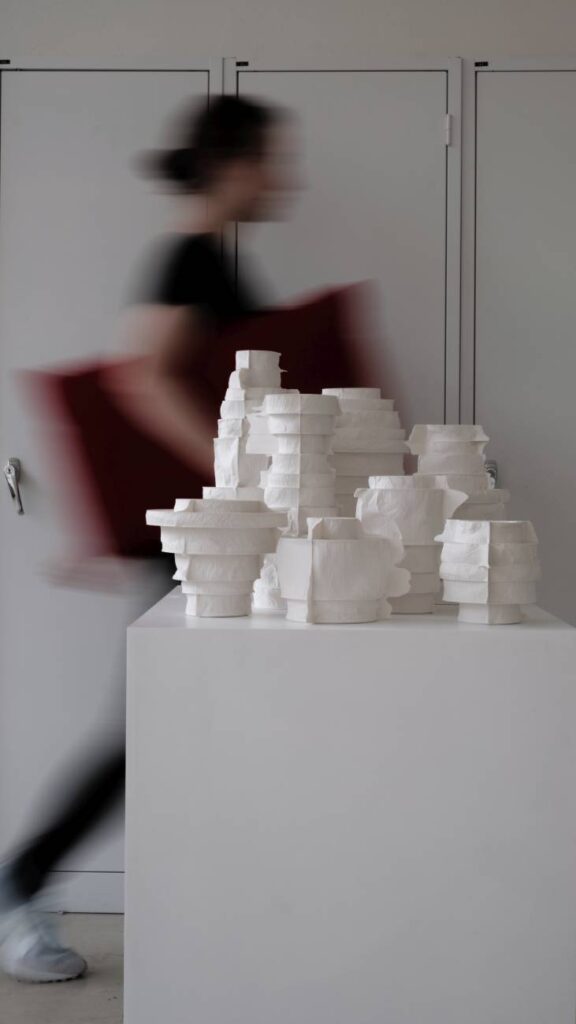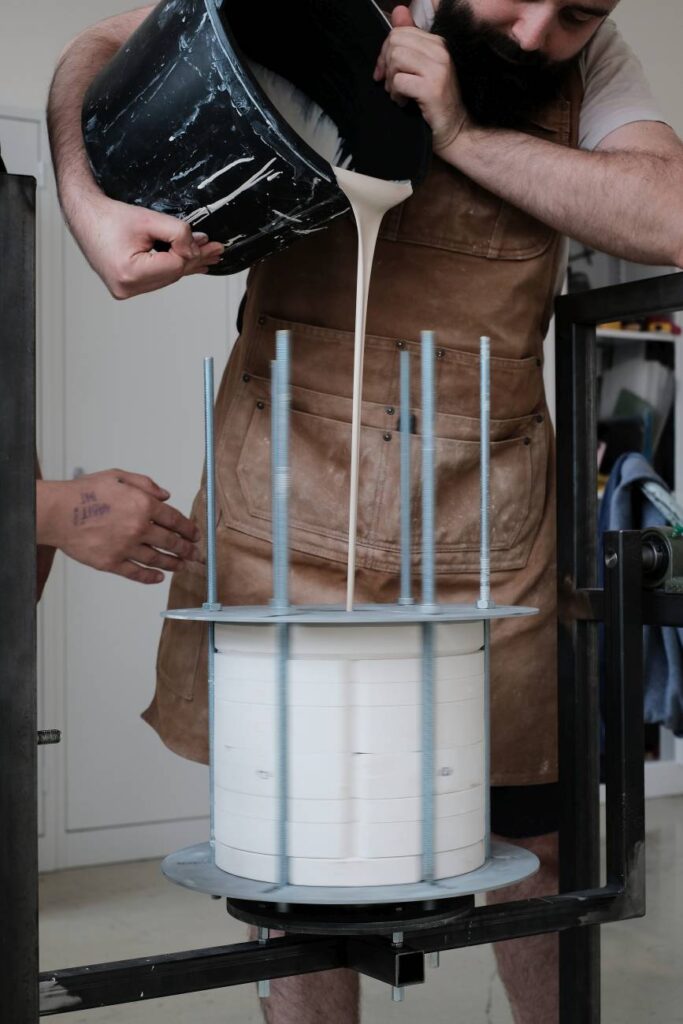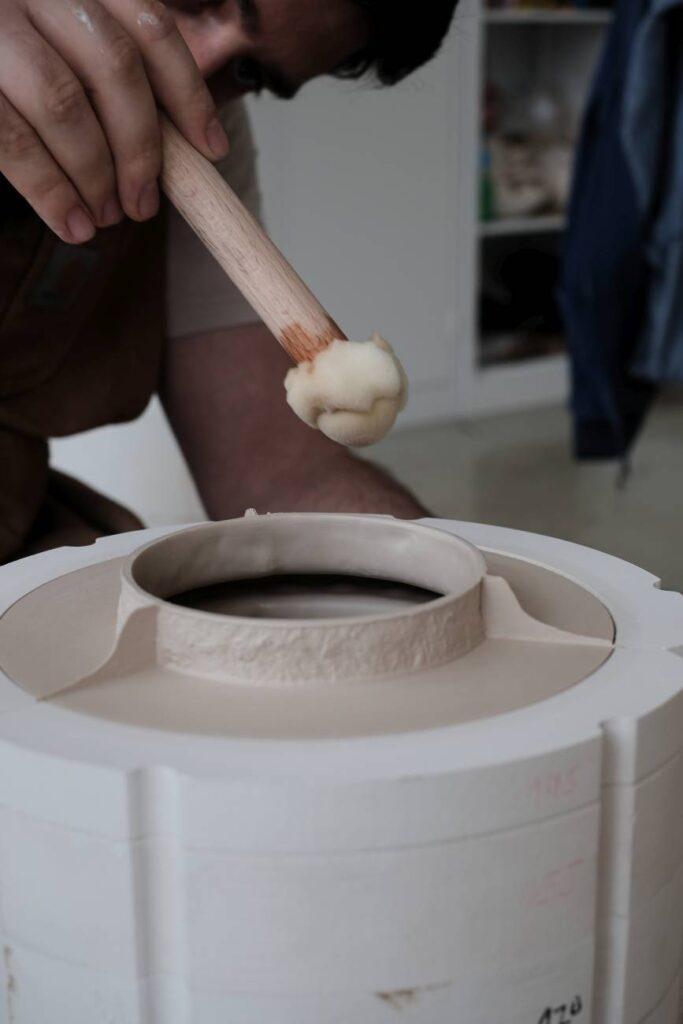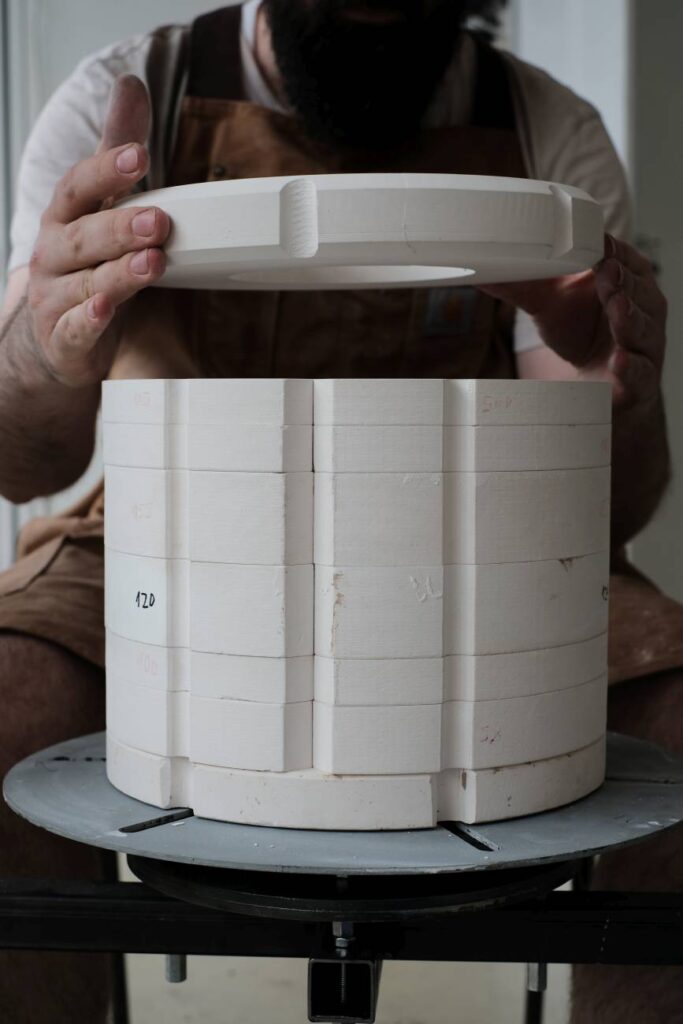My diploma thesis titled “The Original” from 2022 focused on the issue of originality in design. It is based on the work of Czech-Norwegian design theorist Jan Michl, who argues that every design is essentially a redesign, and that no designer begins their work without predecessors. I develop this thesis by pointing out that the design world offers numerous products that are suspiciously similar to others. Yet, today’s era is marked by a desire for individualization—everyone wants to own something unique. My diploma project illustrates the hypothesis that originality can only be created by incorporating chance into the creative process. It presents an authorial technology designed as a system for casting ceramic objects, allowing for variable generation of “original” artifacts.
The project diverges from the final product as the usual outcome of design activity. It emphasizes the process, represented by a production line that alludes to artisanal manufacturing. The process consists of five steps. The first is a 3D printer creating plaster molds. The second is a plaster workshop where plaster blanks are cast. In the third step, a splitting press with alternative blades removes parts of the casting cavity. Subsequently, the broken pieces are arranged in a specific composition, forming the mold for the ceramic object. Casting it in porcelain is the final step in the production process. The variability in assembling individual mold modules, as well as the deliberate imperfection in the casting process, ensures the originality of each result.
In contrast to standard manufacturing practice, which aims to multiply a “perfect” design in numerous pieces, the project’s outcome is an algorithm by which each object—“vase”—is an original piece. It can be created by the project’s author, software, or even the user actively participating in the process. A certain touch of refinement is added by the porcelain, which is glazed on the inside. However, the unglazed exterior surface (biscuit) retains the textures of the plaster molds, referencing the authorial technical solution and the processual nature of the artifact. Here, the design of the process is more important than the design of the product. The project also addresses the convergence of artisanal and industrial technologies, representing one of the strategies for sustainable civilizational continuity.
For my diploma thesis, I received the Rector’s Award from AFAD, the main prize at Bratislava Design Week 2022, and the National Design Award 2023.
